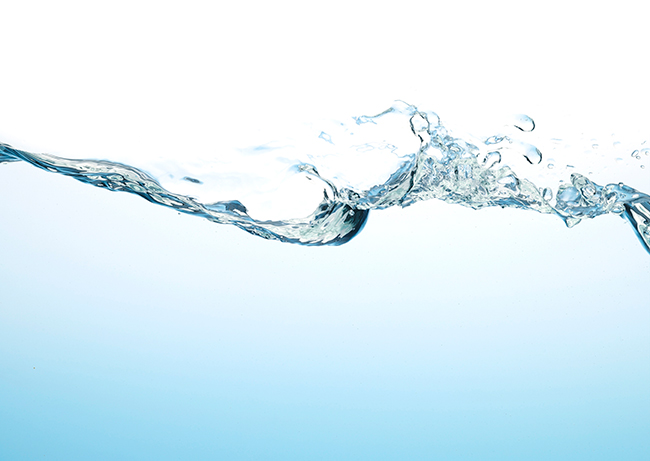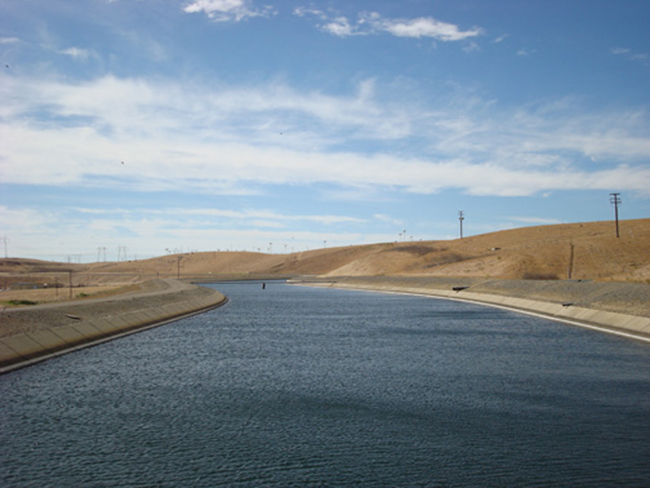
Under Water
Until the 20th century, all the great cities of the world were built on equally great sources of water. Ancient Egypt had the Nile. Ancient Rome had the Tiber. London has the Thames and Paris the Seine. New York, Boston, Chicago … all built on water.
-
CategoryUncategorized
Until the 20th century, all the great cities of the world were built on equally great sources of water. Ancient Egypt had the Nile. Ancient Rome had the Tiber. London has the Thames and Paris the Seine. New York, Boston, Chicago … all built on water.
All civilization depends on water. Modern advances in transportation nullified the need for adjacent water sources, but not the need for water itself. Los Angeles was established on a river too, but the Porciuncula was ill equipped to support the city that would develop on her banks. Modern-day LA has an ever-increasing demand for water and must depend on imported water to supplement its own sources.
Los Angeles County gets its water from three primary sources: the Colorado River, Northern California and local groundwater reserves called aquifers. The Colorado River water comes to us via its namesake aqueduct. Our Northern California supplies come from the Owens River Valley via the Los Angeles Aqueducts, and the Feather River via the California Aqueduct, overseen by the California Department of Water Resources’ State Water Project (SWP). Our groundwater comes from aquifers throughout the LA area, especially the San Fernando Basin.
Most of LA County’s water is managed and distributed by the Municipal Water District of Southern California (MWD), a regional wholesaler providing water to 26 member public agencies. Whether you live in Malibu, Torrance, or Encino, if you’re an LA County resident, the MWD probably handles your water.
Water is such a critical resource for the western U.S. that a bureaucratic maze of local, state, and federal agencies oversee some component of the water system. The U.S. Reclamation Service, a branch of the Department of the Interior, the Departments of Recreation & Parks, Fish & Game, Energy, Health & Human Services, USGS, EPA, local DWPs, and countless other agencies, all have an interest in governing our water, frequently with opposing agendas.
In her 1977 essay Holy Water, Joan Didion writes, “Water is important to people who do not have it, and the same is true of control.” In the West where water is everything, it makes sense that so many vie to control it. Los Angeles has a symbiotic relationship with water. Without it, the Los Angeles we know today would not exist.
Fred Eaton, J.B. Lippincott, and especially William Mulholland are credited for bringing LA its water. The stories surrounding how these men delivered Eastern Sierra water to Los Angeles are filled with manipulation, deceit, and intrigue. Whether heroes or villains, they gave us access to the Owens River Valley watershed and built the LA Aqueduct, ensuring that LA would receive a steady supply of water to meet its future needs.
 When Mulholland realized the LA Aqueduct alone would not adequately satisfy LA’s growing demand, he went on to develop the Colorado River Aqueduct. These engineering marvels quenched the thirst of a burgeoning city, enabling the expansion and development that made Los Angeles into an economic powerhouse. Mulholland once said, “Whoever brings the water brings the people.” How true.
When Mulholland realized the LA Aqueduct alone would not adequately satisfy LA’s growing demand, he went on to develop the Colorado River Aqueduct. These engineering marvels quenched the thirst of a burgeoning city, enabling the expansion and development that made Los Angeles into an economic powerhouse. Mulholland once said, “Whoever brings the water brings the people.” How true.
In only a century, LA grew from a mere 1,600 souls to almost two million people. LA County’s population now tops 10 million. The LA economy grew at an equally impressive rate. According to 2009 World Bank figures as reported by the LA Times, if the greater LA area were measured as an independent nation, it would rank 15th among world economies, between Mexico and South Korea. These spectacular increases in industry and population consequently place higher demands on our resources, especially water.
Situated in the geographical equivalent of a tennis racquet’s sweet spot, it’s easy to see why 10 million people make this modern-day Eden their home. 300-plus days of sunshine and an average high of 75 degrees allow almost anything to grow here. But there is a dark side to our ShangriLa. We live in a semi-arid desert. Our flowering gardens, lush green lawns and sprawling golf courses don’t belong here. Our paradise is quite literally unsustainable. Just as Mulholland knew at the turn of the last century that we urgently needed to face the reality of our water supply, the last decades have forced us to confront the dire reality of our dwindling resources and decadent water-consumptive lifestyle.
The quandary of an over-populated desert is further complicated by LA’s peculiar climatic cycle. May through October we see virtually no precipitation. November through April, we receive approximately 15 inches of rain. Most of that falls between December and February. This presents a vicious cycle of cumulative issues. A seven-month dry season often causes drought. If wet season precipitation is unusually low, that drought can be so severe that when the autumn winds blow, punishing brush fires may follow, destroying the vegetation that holds the shifting earth below. If the next wet season is an El Niño pattern with heavy precipitation, the lack of vegetation will trigger flooding and mudslides. This cycle of wet, dry, fire, wet has been present here for centuries, long before the city was inhabited. But density and urbanization magnify the region’s inherent problems.
When LA first sought to address its water supply issues, too much water was just as great a concern as lack of it. Before the Porciuncula became the LA River and eventually the flood channel we know today, it was common during rainy seasons for it to flood, causing destruction and death in its wake. The more populated LA became, the greater the damage and the worse the flooding seemed.
In an urban environment such as LA’s, we erect buildings, streets, and sewers, covering every surface with impermeable materials. This urbanization severely disrupts the natural hydrologic cycle. When it rains, the impervious surfaces deflect water, preventing it from seeping into the ground and recharging the aquifers, further exacerbating our water shortages. They also create runoff that flows straight to the ocean carrying with it a host of urban contaminants and pathogens, polluting the bay and disrupting the eco-system.
We in Southern California face increased competition from other regions for the same finite water supplies. SWP gives California’s Central Valley top priority to receive water allocations. Arizona has riparian rights to a large allocation of the Colorado River. Las Vegas, Phoenix, even Mexico compete for the same water. There simply isn’t enough water to meet everyone’s demands.
The challenges may seem daunting, but there are innovations and simple solutions that can help us begin to resolve our water issues. If we use a multi-layered approach to tackling our water future, we can go a long way in ensuring our city has ample quantities of high-quality water for decades to come.
The familiar slogan “Reduce, Reuse, Recycle,” has transcended from catch phrase to way of life. We regularly tote reusable bags to the grocery store or farmers market and cheerfully separate our trash from recycling. Though the occasional couch still appears in an alley, we’ve gotten pretty good at taking care of our garbage.
Now it’s time to apply the same principles to our water. One of the most logical ways to address water supply is through reclamation (aka recycling). Much of our water is used only once, mostly for benign purposes such as laundry, dishes, and showering. Once used, this water is called graywater. It doesn’t contain the same contaminants or pathogens that toilet wastewater (called blackwater) does, so graywater is easier to treat for reuse. Currently, most graywater ends up in the same treatment system as blackwater. But innovations in water technology are making it possible to collect graywater separately, treat, and reuse it for many non-potable purposes. Recycling graywater can be done on a small scale within individual homes or on a larger, city-wide scale.
Stormwater recycling is another potential game-changer in reclamation. A perfect example of this is the City of Santa Monica’s Urban Runoff Recycling Facility (SMURRF). A joint effort of Santa Monica, the city of Los Angeles, MWD, and SWP, SMURRF collects dry weather runoff before it reaches and pollutes the Santa Monica Bay. The water collected goes through a series of filtering processes until it’s clean enough for non-potable reuse. SMURRF processes up to 500,000 gallons of water per day, approximately 4% of the city’s use, and represents a viable solution to urban water issues that could positively impact California and the nation.
Other advancements in water recycling include rainwater collection, dual-plumbing systems (called Purple Pipe), and Green Street technology. Already in use on Santa Monica’s Bicknell Avenue, Green Street technology collects water through angled gutters and pervious pavement, steering water into a system of filters and catch basins. The collected water recharges the aquifer and hydrates adjacent vegetation. Any remaining surface water cycles back into the system eliminating all runoff.
Conservation may be pedestrian, but it’s also effective in increasing water supplies and there are some terrific new innovations available. Sensor and weather-based irrigation systems, low-flow sprinklers and faucets, and water-efficient appliances are all making an impact.
More controversial technologies include desalination and blackwater recycling. Technology exists to remove all toxins and pathogens from blackwater to return it to a potable standard, but the ick factor makes its viability challenging. Widespread acceptance will require changing public perception. Desalination, though viable in Dubai where there are no other options, currently doesn’t add up for LA. The arguments about energy use and cost invlved in desalinisation are slowly waning, however, as nano-filtration technology improves. But desalination could also have a potentially negative environmental impact. Perhaps years from now, it may make sense but at the moment, utilizing the water resources we already have in more efficient and effective ways, offers a better, sounder option.
Our population and demand for water will likely continue to grow. The priority will need to be manifold: continue providing an adequate quantity of quality water while protecting the eco-system that makes the Southland such a wonderful place to live. Through education, conservation, planning and innovation, the precious resource that gave life to our vibrant city can continue to flow, and we in turn can flourish.
Want to find out how much water you are using and how you can reduce your water consumption? Visit wecalc.org and use their water-energy-climate calculator.











